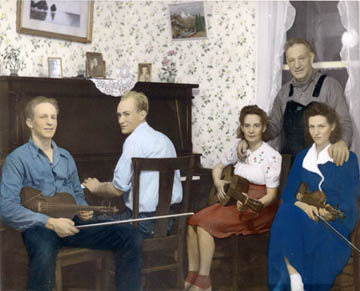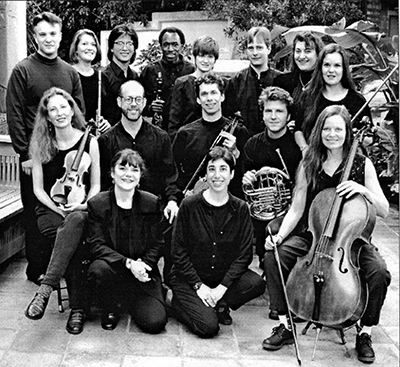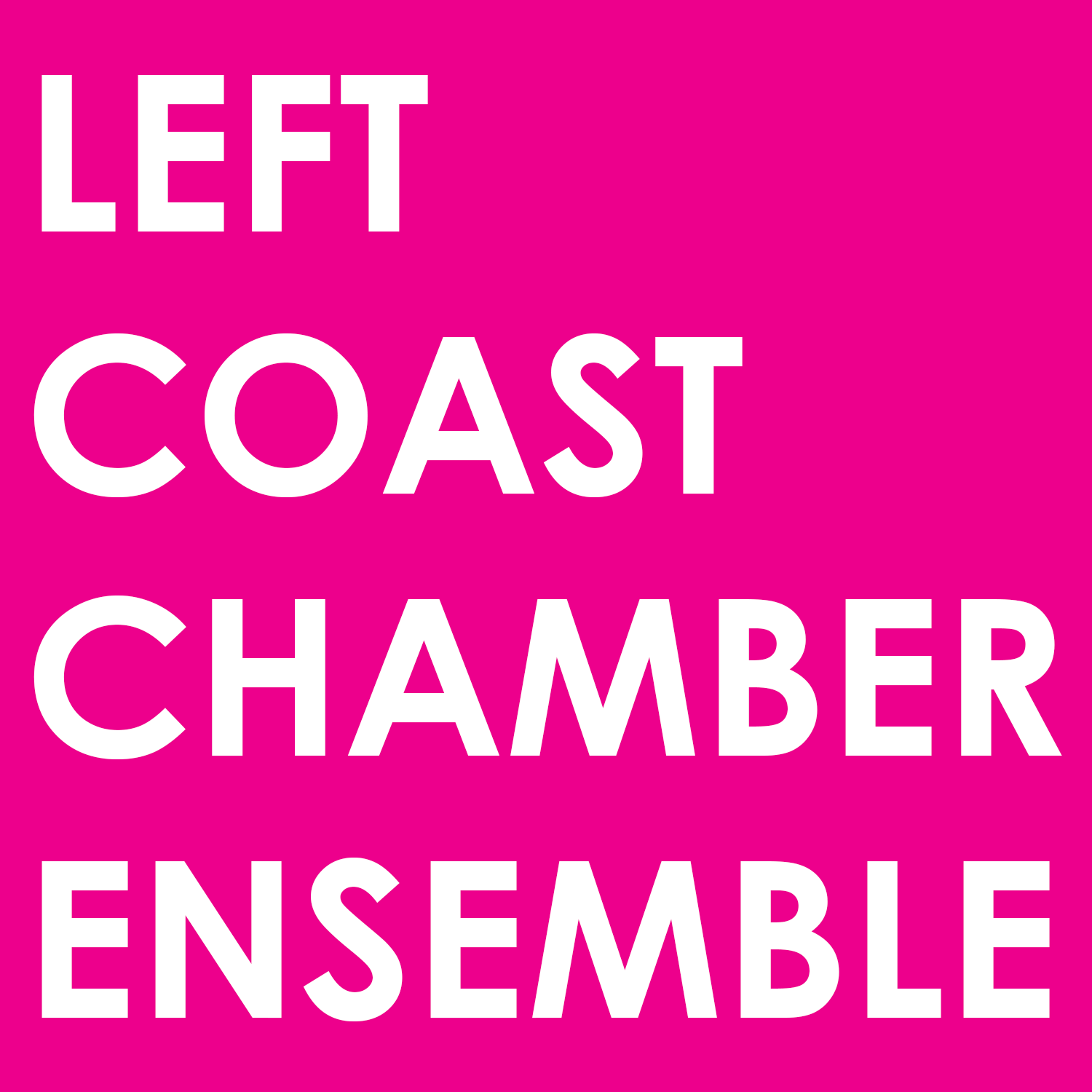Twenty years ago, fifteen young, idealistic, ambitious musicians decided to build a chamber music consortium. All worked for other musical groups, where they felt the repertoire was sometimes too limited and the rehearsals too few. In 1992, they formed Sonus Imaginorem (“The Sound of Imagination”), a group consisting of a string quartet, bass, winds, horn and piano which played mostly contemporary music but featured familiar masterpieces the musicians had grown up playing and loved. The group was co-led by Kurt Rohde and Kathryn Stenberg. Kurt, a composer and violist, moved to San Francisco from New York in 1992 with a vision to bring newly-composed music to the Bay Area. In the next two years two groups-within-the-group were added: the Clavion Quartet, an ensemble of piano and strings which played primarily classical and romantic masterpieces, and Onyx, a string quartet dedicated to performing the music of local composers. The beginning was difficult; two or three concerts a year, little, if any, money, and sometimes more people on stage than in the audience.
Foundations
Tim Allen, Kurt Rohde’s partner, thought he “could do better than that.” With Peter Loeb, Tim had established Allen/Loeb Associates, a successful consulting practice ten years earlier. He believed he also could, working with other supporters of the group, create something for the musicians that would build an audience, guarantee regular performances, and make it possible to pay them the going professional rate. Plus he wanted to share in the musicians’ fun and excitement.
Music making had always been a large part of Tim’s life. His grandfather Juddson Allen did not play but believed everyone should have the opportunity to play an instrument. All his children learned to play. And, so did everyone in the house in which Tim grew up. They played banjo, fiddle, ukulele, mandolin, piano, harmonium and guitar. Tim never took lessons. Nevertheless, he played piano and guitar professionally. At one point he was playing five shifts a night in San Francisco nightclubs.
Guided by a Nolo Press book on how to start a non-profit and the organizational skills of co-worker and friend Margaret Spaulding, Tim gathered together a board of directors and in March, 1995, the Chamber Music Partnership, an organization which would encompass Sonus Imaginorem, Clavion and Onyx came into being. Soon after, the Sonus Imaginorem players renamed themselves the Left Coast Chamber Ensemble and the number of concerts per season mushroomed from two to ten. Looking back on that period, all agree putting on ten concerts a season was “insane” for the players who had to practice, rehearse, and learn ten different and difficult programs within a period of nine months and for the Chamber Music Partnership’s first President (Tim Allen) and Artistic Director (Kurt Rohde) who were responsible for all the nitty-gritty of producing concerts, finding venues, publicizing programs, printing programs and tickets, and raising money.
In 1997 the three groups, Clavion, Onyx and Left Coast Chamber Ensemble, became one: the Left Coast Chamber Ensemble and the mission of the group came into focus—to offer compelling performances that demonstrate that new and older chamber music are part of one continuum. The ensemble began performing for other presenters, such as the Other Minds Festival and Composers Inc., and contracting to record pieces. And the number of different programs per season became saner: five different programs each performed twice, once in Mill Valley and once in San Francisco.

Left with violin: Terry Allen, Tim’s father. Right with overalls: Juddson Allen, Tim’s grandfather. In between, Tim’s uncle and aunts. 1940's.
Expanding the New Music Community
Deciding it was time to increase its exposure as a resource for composers and its visibility in the contemporary music world, the Left Coast Chamber Ensemble initiated its composition competition in 1997. The competition has attracted more than a thousand entries since its start. Composers appreciate that the number and variety of musicians in the Left Coast Chamber Ensemble makes it possible to play a greater variety of new music for chamber groups.
Gabriel Vine’s piece for cello and harpsichord, ironically an instrument not played by a Left Coast musician, won the first competition. Undaunted, the Ensemble rented a harpsichord which its intrepid pianist played at the piece’s premiere.
Left Coast has commissioned and premiered over eighty new pieces by leading composers of our time, many of whom have attended the performances and spoken to the audiences. In the same concerts, the group has presented the great masterworks of chamber music by composers such as Bach, Mozart, Beethoven, Brahms, Debussy, and Copland.
The small community of players envisioned by a group of musicians twenty years ago whose members could recombine into different groups and play classical and contemporary music has succeeded in becoming an important part of the contemporary music scene, locally and nationally. Left Coast’s musicians, its 2011 competition winner (Mike Solomon), its two composers (Kurt Rohde and Eric Zivian), and a string quartet by Sam Nichols (a local composer) were featured in a separate concert, New American Masterpieces, at Sacramento State University’s 2011 Festival of New American Music.

Founding members of Left Coast Chamber Ensemble’s predecessor Sonus Imaginorem: Left to right: (Back row) Michel Taddei, Lisa Byrnes, Leighton Fong, Carl Jackson, Anna Presler, Tom Nugent, Ruth Butterfield, and Candace Guirao; (Middle row, seated) Kate Stenberg, Michael Goldberg, Kurt Rohde, Joshua Garrett, and Kris Yenney; (Front row, kneeling) Andrea Plesnarski, and Phyllis Kamrin.
And, this year, 2012, the Left Coast Musicians have been asked to play works by the three western division finalists of the National Rapido! Composition Contest. The pieces will be played at Left Coast’s October 1st concert and judges will select one for the final competition round in Atlanta, Georgia. The winner of that round will receive $7,500 and a commission to compose a work to be premiered by the Atlanta Symphony Orchestra.
The group has made four recordings: two of music by Beth Custer, a San Francisco composer; a CD of San Francisco premieres, and One: Chamber Music of Kurt Rohde, a CD to be released this September.
Starting from an income of zero, the group has built a firm basis of support, including a loyal and growing group of individual subscribers and regular institutional support from the San Francisco Grants for the Arts and foundations such as the Clarence E. Heller Charitable Fund and the Ann and Gordon Getty Fund. The group also has a stable, increasing audience in San Francisco, Mill Valley, and on the Internet.
Over the years, there has been some turnover in the group’s membership. Eric Zivian, pianist and composer, who had worked with Kurt Rohde since they were teenage students at the Curtis Institute of Music, joined the group when he moved to San Francisco in 1994. Kathryn Stenberg left to start her own group, the Del Sol Quartet, in 2000; Stacy Pelinka (flutist) and Jerome Simas (clarinetist) replaced Lisa Byrnes and Carl Jackson in 2001 when the two wind players took jobs in Utah; and Tanya Tomkins (cellist) joined the group in 2005.
Fifteen years ago, in the June 1997 issue of 20th Century Music Magazine, music critic Sarah Michael wrote, “Can you imagine a concert…played by a dozen performers who are each excellent technicians, excellent musicians and obviously enjoying themselves? Can you imagine a well-constructed program, one with variety, beauty, and interest? You don’t have to imagine this: you can experience it first hand at the Left Coast Ensemble’s regular concerts…”
Nine of those “dozen performers”---Leighton Fong, Michael Goldberg, Phyllis Kamrin, Tom Nugent, Andrea Plesnarski, Anna Presler, Kurt Rohde, Michel Taddei, and Eric Zivian---are still playing chamber music together. Fifteen more years of rehearsing, performing and enjoying themselves have made Sarah Michael’s description of Left Coast concerts even truer now than it was then.
Our Next 20 Years!
From Artistic Director, Anna Presler: “As we plan future concerts and launch new outreach programs, we look forward to LCCE’s next twenty years. We’ll keep on working to build bridges between performers and audience, and keep working to convey what entrances us about chamber music: the close-up experience of its emotion and logic, stories and humor, dances, lullabies, conversations, flights of fancy and countless other facets, including, of course, the sheer joy of hearing sounds come together. And we’ll continue to perform and commission diverse new works alongside the older chamber music masterpieces that won us over in the first place.”
Author: By Marilyn Zivian, Member, LCCE Board of Directors, with much appreciated help from Tim Allen, Phyllis Kamrin, Anna Presler, Kurt Rohde, and Lena Zentall. September 2012.








